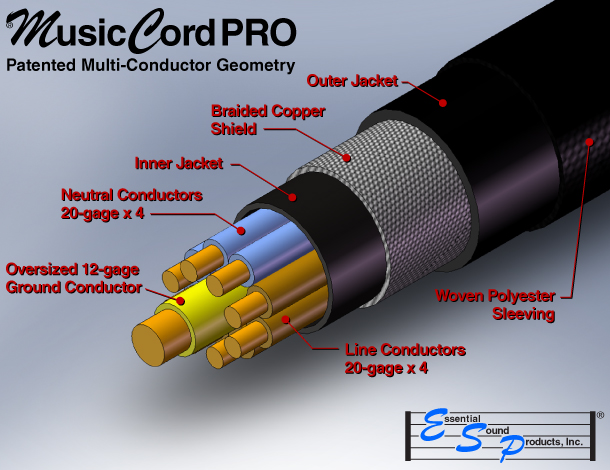A few things the cable designer said that caught my attention.
Size of the conductor wire gauge matters. Well ya...
How you get there without changing the phase relationship between the voltage and the current. Increase the wire gauge be it solid or stranded increases the inductance in the circuit. That will cause a phase shift between the voltage and the current. Ideally you want the two in phase.
Solution, parallel several smaller gauge individual insulated conductors together. That not only limits induction but adds capacitance which combined helps keep the voltage and current in phase. (It should be said most well know cable manufactures design their cables this same way. Also the majority of them, from what info they give I have noticed, the parallel individual small insulated conductors are solid wire, not stranded.
Essential sound Products uses four 20 gauge insulated conductors for the Hot and four for the neutral conductor. Equivalent wire gauge is 14awg. 20 gauge is pretty small. Just going from memory the smallest Audioquest uses is 18 gauge solid wire. Though I am not current what any manufacturers use today. Going from memory some uses different gauge insulated wires in their mix of parallel conductors to get their desired wire gauge.
Another thing the cable designer talked about was shielding. How he approaches the use of the shield spacing it from the Hot and neutral current carrying conductors is similar to other cable manufacturers.
It should be noted he did not mention the secrete ingredients used in his cable. The proprietary stuff.
This is where the professionals need to step in and give their interpretations of the measurements.
.


